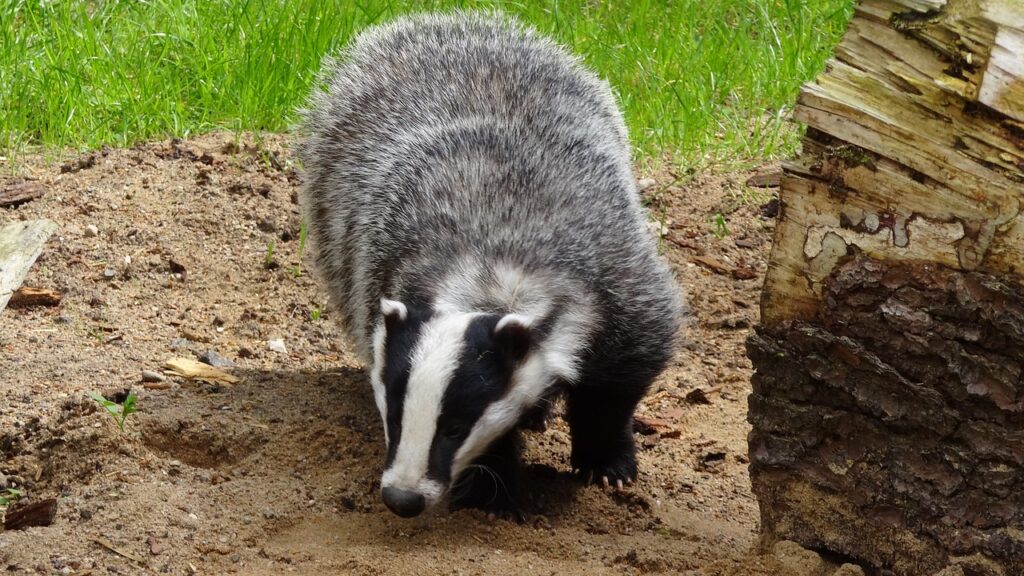Are you curious about animals that share similarities with badgers? Well, you’re in luck! In this article, we’ll explore fascinating creatures that possess traits akin to badgers.
From the mustelid family to otters, weasels, minks, and more, these remarkable animals display a variety of body shapes and sizes. Known for their dense and soft fur, many of these creatures are commercially hunted for their valuable pelts.
So, let’s dive into the world of badger-like animals and discover their unique characteristics and habitats.
Key Takeaways
- The Mustelid family includes 65 distinct species, including animals like weasels, ferrets, badgers, martens, wolverines, otters, and skunks.
- Otters are found in Europe, Asia, North and South America, and have short limbs and fur-covered bodies like badgers. They are active during the day and have a lifespan of 10 to 20 years.
- Weasels and minks are small carnivorous mammals found in various regions. Weasels have an average length of 12-14 inches, while minks are semiaquatic animals bred for commercial purposes. They have a mixed diet of fish, bird, and eggs and are active during the day.
- Skunks, mongooses, ferrets, polecats, and martens are also part of the Mustelid family. Skunks have a strong smelly liquid defense mechanism, mongooses reside in grasslands and open fields in Africa and Europe, ferrets are domesticated carnivores mainly found in New Zealand, polecats are nocturnal and territorial animals found in dry climates, and martens are omnivores with retractable claws and bushy tails.
Otters
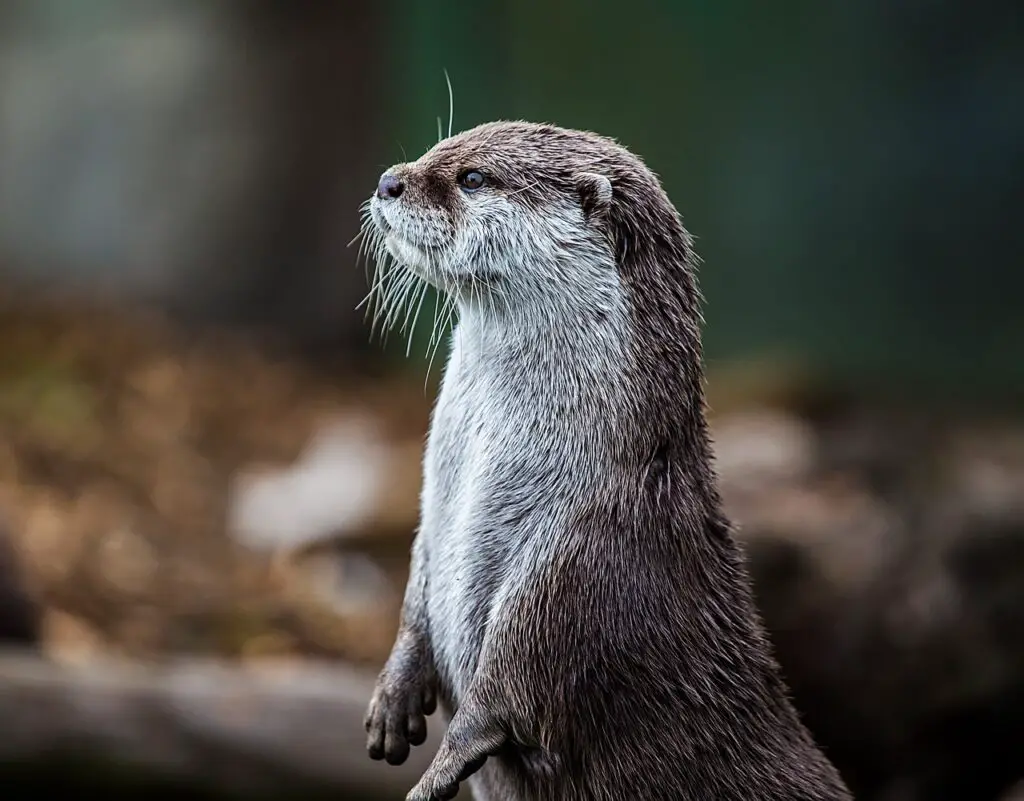
If you’re interested in animals similar to badgers, you’ll find otters to be a fascinating choice. Otters belong to the Mustelid family, which includes other species like weasels, ferrets, martens, and skunks. They’re found in Europe, Asia, North and South America.
Otters vary in size, ranging from 2 to 5 feet. Their lifespan typically falls between 10 to 20 years. Similar to badgers, otters have short limbs and fur-covered bodies. They’re active during the day, unlike nocturnal animals. Otters are known for their playful behavior, often seen sliding down riverbanks or diving for fish.
They’ve adapted to a semi-aquatic lifestyle and can be found in various habitats, including freshwater rivers, lakes, and coastal areas. Otters are excellent swimmers, thanks to their streamlined bodies and webbed feet. They’ve thick, waterproof fur that keeps them warm in cold water. Otters are also known to use rocks as tools to break open shells or crack open hard prey.
Weasels and Minks
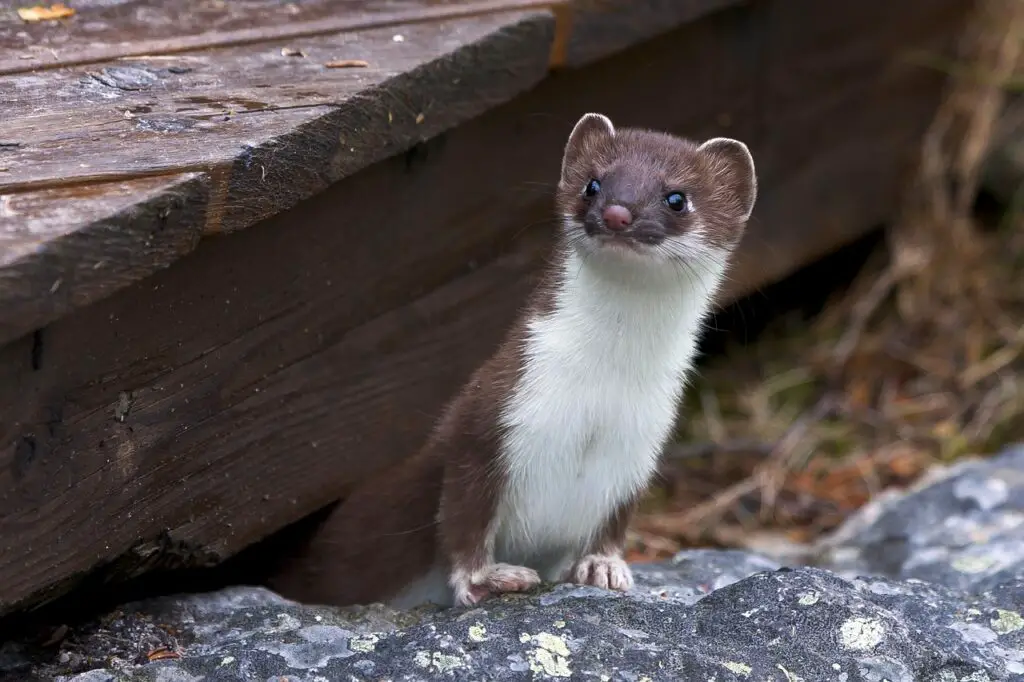
You can find several species of weasels and minks that are similar to badgers in the Mustelid family. Weasels are small carnivorous mammals found in Eurasia, Africa, and North America. They’ve an average length of 12-14 inches, with long heads, short limbs, and fur-covered bodies similar to badgers. Weasels have a lifespan of 7-8 years and are active during the day.
Minks, on the other hand, are semiaquatic animals with glossy dark fur. They’re bred in mink farms for commercial purposes, mainly for their fur. Their lifespan varies from 5 to 10 years. Minks prefer a diet consisting of fish, birds, and eggs. Similar to badgers, minks are active during the day and can be territorial.
It is important to note that mink fur farming has been a controversial topic due to animal welfare concerns. These farms raise minks in captivity solely for the purpose of harvesting their fur. The conditions in which these animals are kept have been scrutinized, leading to calls for ethical and sustainable alternatives to the fur industry.
Fisher
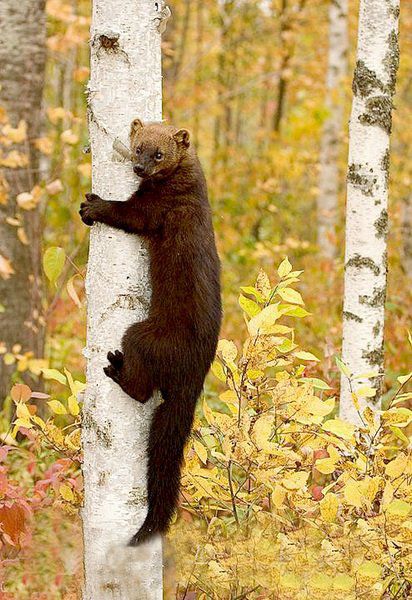
The Fisher, a small mammal found in North American forests and known for its ability to walk on snow, is another animal within the Mustelid family that shares similarities with badgers. The Fisher, also known as the fisher cat, is a carnivorous creature that has a mixed diet consisting of meat and fruit. In terms of habitat, the Fisher prefers to live in dense forests, particularly those with an abundance of coniferous trees. They are known to make their dens in hollow trees, where they raise their young and seek shelter from predators.
To provide a more comprehensive understanding of the Fisher, let’s take a closer look at its diet and habitat:
| Fisher Diet | Fisher Habitat |
|---|---|
| Small mammals | Dense forests |
| Birds | Coniferous trees |
| Insects | |
| Fruits |
The Fisher’s diet primarily consists of small mammals, birds, insects, and fruits. They are agile hunters, capable of climbing trees to catch their prey. Their sharp teeth and strong jaws allow them to efficiently capture and consume their food. As for their habitat, the Fisher thrives in dense forests, where they have plenty of cover and access to their preferred food sources. Coniferous trees, such as spruce and pine, provide an ideal environment for the Fisher due to their dense foliage and the presence of small mammals and birds.
Skunks
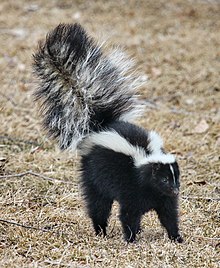
Continuing from the previous subtopic on Fisher, let’s now delve into the world of skunks, another animal within the Mustelid family that shares similarities with badgers.
Skunks, known for their distinct black and white fur, have unique adaptations that help them defend themselves and survive in their habitats.
One of the most notable features of skunks is their ability to release a strong-smelling spray when threatened. This spray, which is produced by scent glands located near the base of their tail, contains a mixture of sulfur-containing chemicals that can cause irritation and discomfort to potential predators or threats. Skunks have the ability to aim and accurately spray their opponents up to 10 feet away. This powerful defense mechanism serves as a warning signal to potential predators, allowing skunks to avoid physical confrontation.
In addition to their defensive spray, skunks also have other adaptations that aid their survival. They’ve muscular bodies and sharp claws, which enable them to dig burrows for shelter and search for food. Skunks are omnivores, feeding on a variety of food sources including insects, small mammals, fruits, and eggs. They can be found in a range of habitats including woodlands, grasslands, and even suburban areas.
Skunks are mostly solitary animals and are active during the night, using their keen sense of smell to locate food.
Mongooses
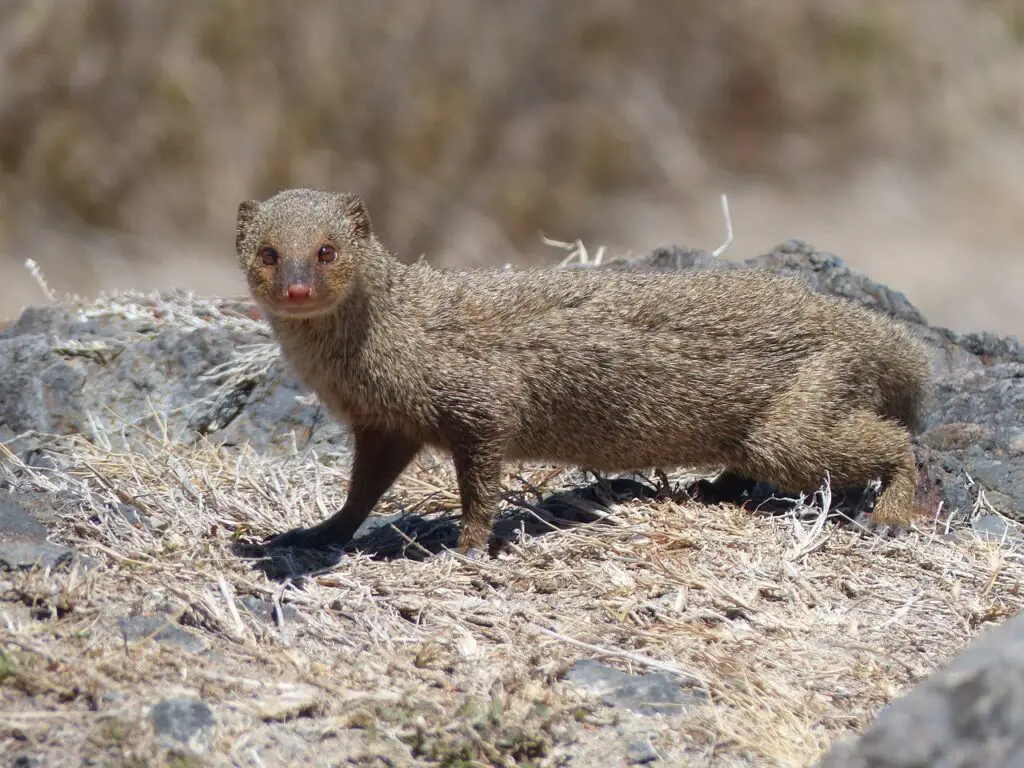
Mongooses, small carnivorous mammals, share similarities with badgers and are part of the Mustelid family. Mongooses are known for their diverse behavior and habitat. They exhibit a wide range of behaviors, including sociality, territoriality, and feeding strategies.
Mongooses are found in various habitats, including grasslands, open fields, and forests in Africa and Europe. They’re adaptable animals and can thrive in different environments. Mongooses are diurnal, meaning they’re active during the day. They’ve a well-developed sense of smell, which helps them locate prey and avoid predators.
One interesting aspect of mongooses is their ability to be domesticated. They’ve been successfully domesticated in some regions, particularly in India, where they’re used to control snake populations. Domesticated mongooses are trained to kill snakes and protect homes and farms from these venomous reptiles. This domestication process involves selective breeding and training to enhance their natural hunting instincts.
Ferrets
Ferrets, like badgers, have been domesticated and are commonly kept as pets. They have a carnivorous diet and are skilled hunters, capable of catching live prey.
Ferrets have a relatively short lifespan, typically living between 5 to 10 years.
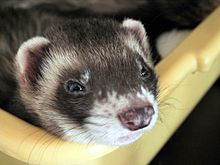
Domestication of Ferrets
To understand the domestication of ferrets, consider their origins and their unique traits.
Ferrets, domesticated animals mainly found in New Zealand, are carnivores and primarily eat live prey. They’re approximately 20 inches long and weigh between 2 to 5 pounds. With round ears and tiny limbs, ferrets have a lifespan of 5 to 10 years.
The domestication of ferrets involves specific breeding practices and training techniques. Breeders selectively mate ferrets to produce desirable traits, such as temperament and coat color. Training techniques focus on socialization and teaching ferrets to respond to commands.
Ferret Diet and Hunting
When considering the ferret diet and hunting, it’s important to understand their carnivorous nature and their ability to catch live prey.
Ferrets are strict carnivores, meaning that their diet consists solely of meat. In the wild, they primarily feed on small mammals, such as rabbits, mice, and voles. However, when domesticated, their diet can be supplemented with specially formulated ferret food.
Despite their small size, ferrets are skilled hunters and possess several techniques for catching their prey. They use their sharp teeth and strong jaws to deliver a swift and lethal bite to the neck or head of their target. Their slender and flexible bodies allow them to navigate tight spaces and burrows, making them effective hunters in underground environments.
Additionally, their keen sense of smell and excellent vision aid them in locating and capturing their prey.
Lifespan of Ferrets
On average, ferrets have a lifespan of 5 to 10 years. This lifespan can be influenced by various factors such as genetics, diet, and overall care. Understanding the lifespan of ferrets is crucial for their owners to provide them with appropriate care and ensure their well-being.
Here are three important points to consider about ferret lifespan:
- Genetic Factors: Like other animals, ferrets inherit certain genetic traits that can affect their lifespan. Breeding practices and the health of the parents can play a role in determining the longevity of a ferret.
- Diet and Nutrition: Providing a balanced and nutritious diet is essential for the overall health and lifespan of ferrets. A diet rich in high-quality protein, fat, and essential nutrients can contribute to their longevity.
- Environmental Factors: The living conditions and care provided to ferrets can greatly influence their lifespan. A clean and stress-free environment, regular vet check-ups, and appropriate socialization can all contribute to a longer and healthier life for ferrets.
Understanding these factors and providing proper care can help ferret owners ensure that their furry companions live a happy and fulfilling life.
Polecats
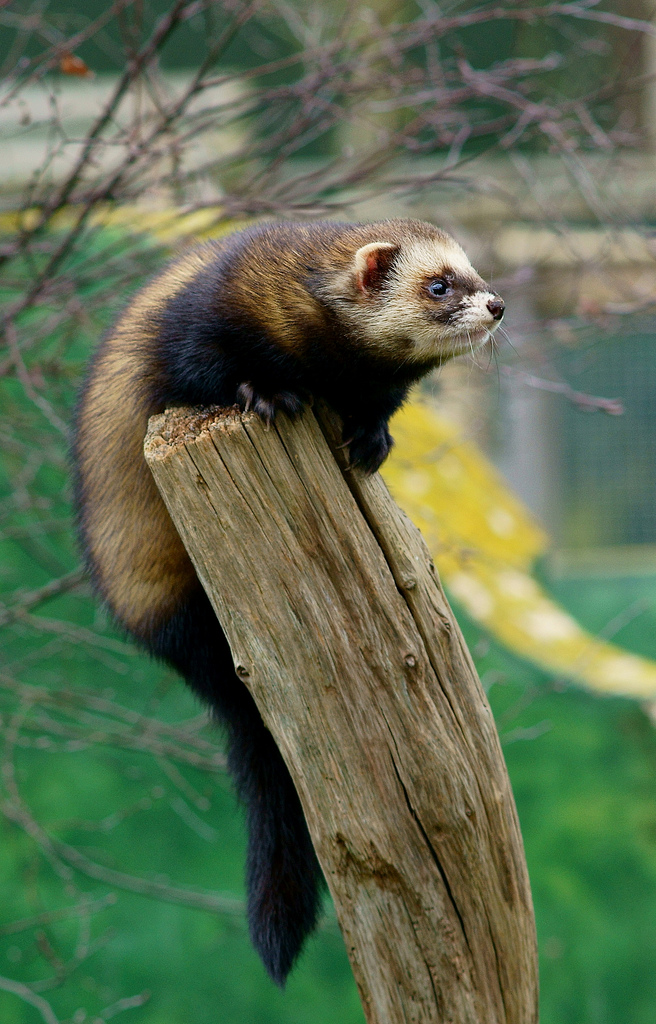
Polecats, nocturnal and territorial predators, are known for their slender bodies and sharp hunting skills. These carnivorous mammals, belonging to the Mustelid family, inhabit dry climates in Europe and Africa, particularly grasslands and savannas. With a length ranging from 11 to 18 inches and weighing about 1 to 5 pounds, polecats exhibit a diverse range of colors among different species. Their diet consists of snakes, birds, and rodents, making them efficient hunters in their environments.
Polecats display territorial behavior, marking their territories with scent markings to communicate and defend their hunting grounds. Their sharp senses and agile bodies enable them to navigate through their habitats with ease, allowing them to catch their prey swiftly and efficiently.
To provide further insight, here is a table comparing the characteristics of polecats with other members of the Mustelid family:
| Species | Habitat | Size | Diet | Behavior |
|---|---|---|---|---|
| Polecats | Europe and Africa | 11-18 inches | Snakes, Birds, Rodents | Nocturnal, Territorial |
| Weasels | Eurasia, Africa, and North America | 12-14 inches | Small mammals, Birds | Nocturnal, Territorial |
| Martens | Various regions | 20-28 inches | Small mammals, Birds, Fruit | Diurnal, Territorial |
| Skunks | Woodlands and grasslands | 15-37 inches | Insects, Small mammals, Plants | Nocturnal, Defensive |
Martens

To continue our exploration of the Mustelid family, let’s delve into the world of martens. Martens are small, badger-like mustelids that exhibit fascinating behavior and inhabit various habitats. Here are some key points about martens:
- Behavior and Habitat:
- Martens are primarily solitary animals, with males and females only coming together during the mating season.
- They’re highly adaptable and can be found in a range of habitats, including forests, woodlands, and mountains.
- Martens are skilled climbers, using their sharp claws and semi-retractable claws to navigate trees and search for prey.
- Hunting Techniques:
- Martens are opportunistic hunters, employing various techniques to catch their prey.
- They’ve a keen sense of smell and excellent hearing, allowing them to detect prey from a distance.
- Martens are agile and swift, capable of chasing down their prey on the ground or in trees.
- Prey Selection:
- Martens have a diverse diet, feeding on small mammals, birds, eggs, insects, fruits, and even carrion.
- They’re known to cache excess food in tree hollows or underground burrows for later consumption.
- Martens are skilled hunters and can take down prey larger than themselves, using their sharp teeth and claws to subdue and kill their victims.
Wolverines
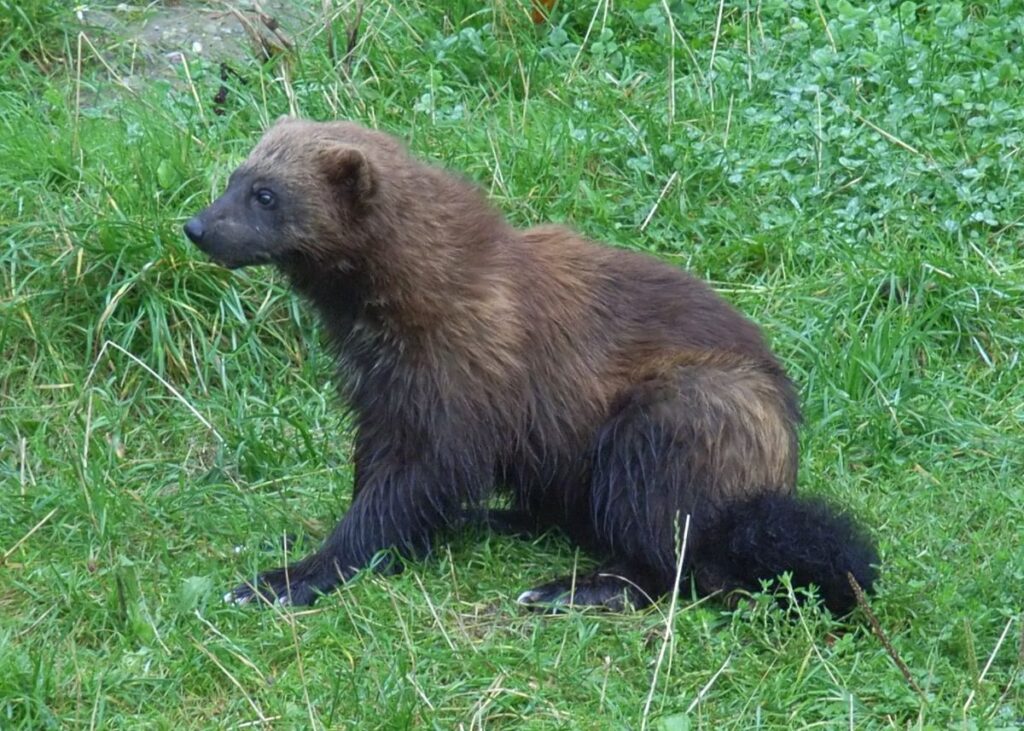
Moving from martens, let’s now explore wolverines, another fascinating member of the Mustelid family that shares similarities with badgers.
Wolverines, scientifically known as Gulo gulo, are large and powerful carnivores found in northern regions of North America, Europe, and Asia. They’ve a distinct appearance with stocky bodies, short legs, and a bushy tail. Wolverines are well adapted to their harsh habitats, including tundras, boreal forests, and mountainous regions.
Wolverines are known for their solitary nature and vast home ranges. These animals are highly territorial and can cover up to hundreds of square miles in search of prey. Their diet primarily consists of carrion, but they’re also skilled hunters, capable of taking down larger animals such as caribou and moose. Wolverines have strong jaws and sharp teeth that enable them to crush bones and devour their meals.
Unfortunately, wolverine populations have faced significant declines due to habitat loss, climate change, and human activities such as trapping and hunting. As a result, conservation efforts have been initiated to protect these remarkable creatures.
These efforts include habitat preservation, reducing conflicts with humans, and implementing regulations on trapping and hunting. By safeguarding their habitats and ensuring sustainable management, we can give wolverines a fighting chance for survival in the wild.
Raccoons
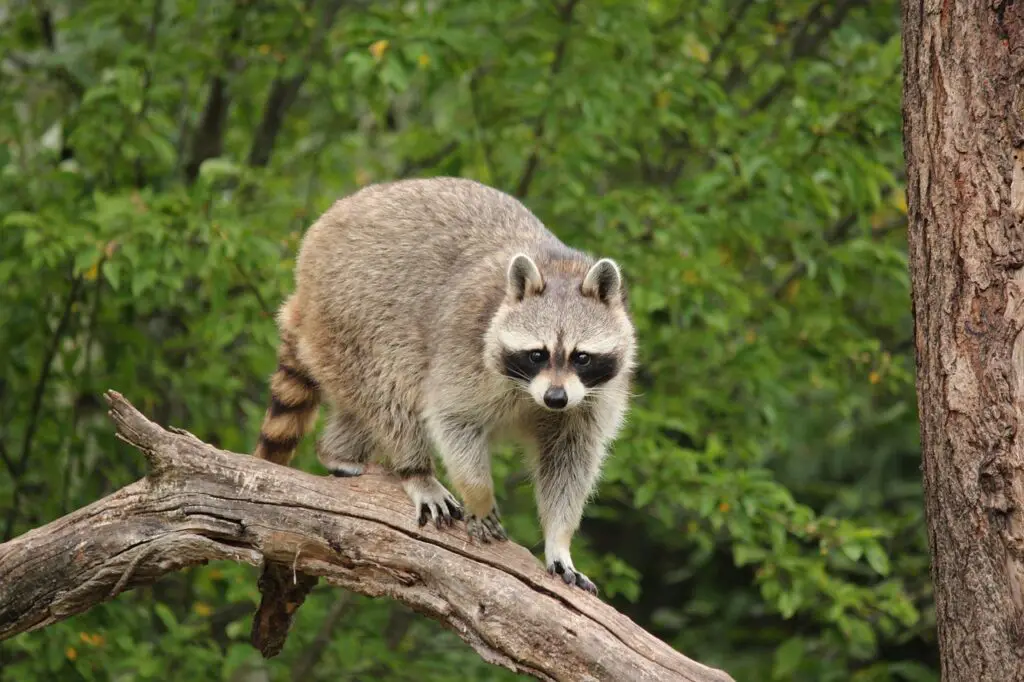
Raccoons, like badgers, exhibit similar traits in terms of their habitat and diet. Raccoons are small mammals that belong to the Procyonidae family, known for their distinctive facial markings and dexterous front paws. They’re primarily nocturnal creatures, often found in forests, urban areas, and near water sources.
Raccoons have an omnivorous diet, feeding on a wide range of food including fruits, nuts, insects, small mammals, and even garbage. Understanding the similarities between badgers and raccoons can provide insights into the evolutionary adaptations and ecological roles of these fascinating animals.
Raccoons: Similar Traits
Among the animals similar to badgers, you’ll find raccoons, known for their distinctive traits. Raccoons are highly intelligent creatures with complex behaviors that have a significant impact on ecosystems.
- Behavior and Intelligence: Raccoons are known for their problem-solving abilities and dexterous hands, which allow them to manipulate objects. They’re curious animals, constantly exploring their surroundings and adapting to different situations. Their intelligence enables them to find food in various environments and even open containers or doors to access it.
- Impact on Ecosystems: Raccoons play a crucial role in maintaining the balance of ecosystems. They’re opportunistic feeders, consuming a wide range of food including fruits, nuts, insects, small mammals, and even garbage. By consuming these various food sources, raccoons help control populations of certain species while also dispersing seeds, aiding in the growth of vegetation.
Raccoons: Habitat and Diet?
After exploring the behavior and intelligence of raccoons, it’s important to delve into their habitat and diet.
Raccoons (Procyon lotor) are highly adaptable animals and can be found throughout North America, from urban areas to forests. They’re known for their ability to thrive in diverse environments, including marshes, swamps, and even mountainous regions.
Raccoons are opportunistic omnivores, consuming a wide range of food items such as fruits, nuts, insects, small mammals, fish, and amphibians. Their diet varies depending on the availability of resources and the season.
Raccoon populations have shown resilience and adaptability, allowing them to thrive in both natural and human-altered habitats. However, it’s important to monitor raccoon population trends and their impact on local ecosystems to ensure their coexistence with other species.
Honey Badgers
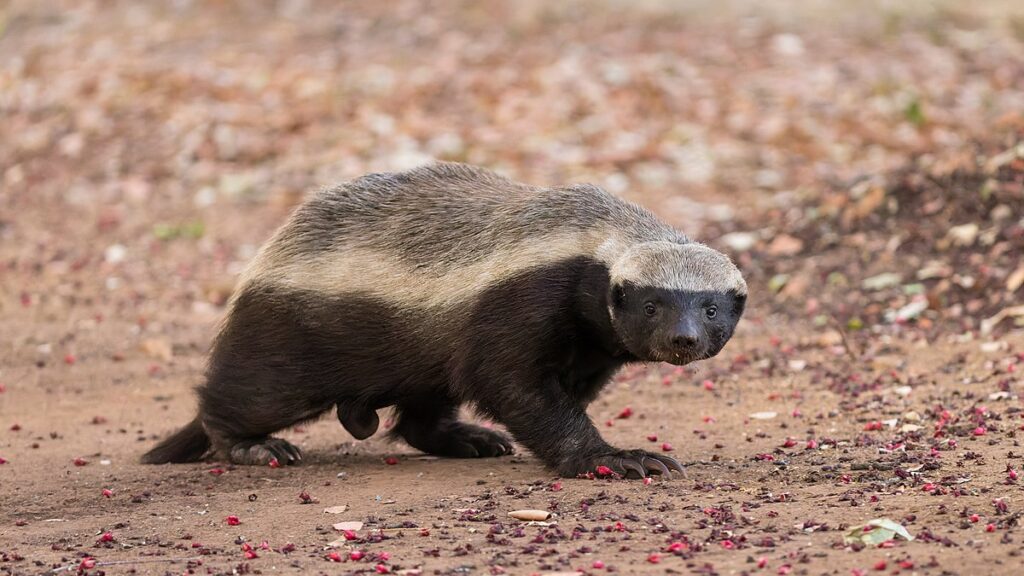
If you’re looking for an animal similar to badgers, one fascinating option is the honey badger. Honey badgers, also known as ratels, are small carnivorous mammals that belong to the Mustelid family. They’re found in various habitats, including grasslands, savannas, and woodlands, across sub-Saharan Africa, the Middle East, and the Indian subcontinent. Honey badgers are known for their remarkable behaviors and adaptations.
Here are three interesting facts about honey badgers:
- Honey Badger Habitat: Honey badgers are highly adaptable creatures and can be found in a wide range of habitats. They’re commonly found in arid and semi-arid regions, but they can also thrive in dense forests and even mountainous areas. They’re excellent diggers and can create underground burrows for shelter.
- Honey Badger Behavior: Honey badgers are known for their fearless and aggressive nature. They’re solitary animals and are primarily nocturnal, although they can be active during the day as well. They’ve a varied diet that includes small mammals, birds, reptiles, insects, and even honey. Honey badgers are also skilled hunters and have been observed taking down prey much larger than themselves.
- Unique Adaptations: Honey badgers have several adaptations that help them survive in their environment. They’ve a thick and loose skin that allows them to twist and turn freely when attacked. They also possess powerful jaws and sharp teeth, which they use to crush the bones of their prey. Additionally, honey badgers have a keen sense of smell, which helps them locate food and detect potential threats.
Stoats
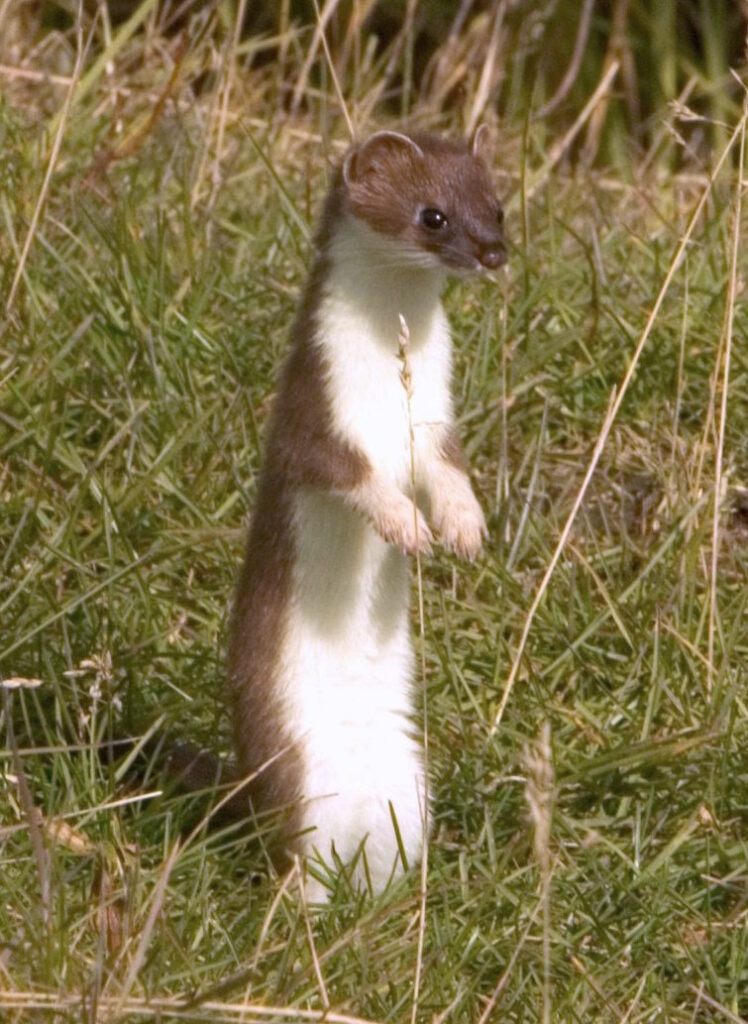
When discussing animals similar to badgers, one must consider stoats, which belong to the Mustelid family. Stoats, also known as short-tailed weasels, are small carnivorous mammals found in various regions of the world, including North America, Europe, and Asia. They’ve long, slender bodies and short legs, making them agile hunters. Stoats are known for their hunting behavior, as they’re skilled predators that primarily target small rodents such as mice and voles. They’ve a keen sense of smell, excellent hearing, and sharp teeth and claws that enable them to capture their prey with precision.
Unfortunately, the stoat population has been experiencing a decline in recent years. The main factors contributing to this decline include habitat loss, competition with other predators, and changes in prey availability. Deforestation and urbanization have led to the destruction of their natural habitats, forcing them to venture into more vulnerable areas. Additionally, the introduction of non-native predators, such as cats and foxes, has increased competition for resources. Changes in prey populations, due to factors like climate change and habitat fragmentation, have also impacted the stoat’s ability to find an adequate food supply.
Efforts are being made to conserve and protect stoat populations, including the establishment of protected areas and conservation programs. By understanding their hunting behavior and addressing the factors contributing to their decline, we can work towards ensuring the survival of these fascinating creatures.
Badger-like Mustelids
Badger-like mustelids, such as otters, weasels, minks, fishers, skunks, mongooses, ferrets, polecats, and martens, exhibit a variety of physical adaptations and have a widespread geographic distribution.
These mustelids, like badgers, have short limbs and fur-covered bodies, making them well-suited for their respective habitats. They possess sharp claws for digging, which aids in their foraging and hunting activities.
Additionally, their diets range from carnivorous to omnivorous, showcasing their adaptability in different environments.
Mustelid Physical Adaptations
Among the mustelid family, animals with physical adaptations similar to badgers can be found. These mustelids have evolved unique features and characteristics that aid in their hunting strategies and communication methods.
- Otters: Possess short limbs and fur-covered bodies like badgers. They’re active during the day and have a varied diet consisting of fish, birds, and eggs.
- Weasels and Minks: Have long heads, short limbs, and fur-covered bodies resembling badgers. Weasels are small carnivorous mammals found in Eurasia, Africa, and North America, while minks are semiaquatic animals bred in farms for commercial purposes. Both species are active during the day and exhibit territorial behavior.
- Skunks, Mongooses, Ferrets, Polecats, and Martens: These mustelids have muscular bodies, sharp claws for digging, and fur coats. Skunks release a strong smelly liquid when threatened, while mongooses, ferrets, polecats, and martens have different dietary preferences and habitats.
Geographic Distribution of Badger-Like Mustelids
The geographic distribution of these badger-like mustelids spans across various regions, making them adaptable to different environments. These mustelids can be found in different parts of the world, including Europe, Asia, North and South America, and Africa. They have adapted to a wide range of habitats, such as forests, grasslands, woodlands, and savannas. Understanding their distribution patterns is crucial for conservation efforts, as it allows researchers and conservationists to identify areas where these species are most vulnerable and in need of protection. By studying their distribution and monitoring their populations, conservation efforts can be targeted effectively to ensure the survival of these badger-like mustelids and maintain the biodiversity of their ecosystems.
| Mustelid Species | Geographic Distribution | Habitat |
|---|---|---|
| Otters | Europe, Asia, Americas | Rivers |
| Weasels | Eurasia, Africa, N.A. | Grasslands |
| Minks | N.A., Europe | Wetlands |
| Fisher | North American forests | Forests |
| Skunks | Americas | Woodlands, Grasslands |
| Mongooses | Africa, Europe | Grasslands, Open fields |
| Ferrets | New Zealand | Domesticated |
| Polecats | Europe, Africa | Dry climates |
| Martens | Europe, Asia | Forests, Mountains |
American Badgers
If you’re interested in animals similar to badgers, you’ll be intrigued by American badgers. American badgers, also known as Taxidea taxus, are part of the mustelid family, which includes various species like weasels, ferrets, and martens.
Here are three key characteristics and behaviors of American badgers:
- Burrowing Behavior: American badgers are renowned for their exceptional burrowing abilities. They possess sharp, strong claws that enable them to dig intricate underground tunnels and dens. These burrows serve as their homes, providing shelter and protection from predators and harsh weather conditions. Badgers are skilled excavators, capable of creating extensive networks of tunnels that can reach up to 10 meters in length.
- Badger Population Trends: The population trends of American badgers have been a subject of concern in recent years. Habitat loss, fragmentation, and human activities such as urbanization and agriculture have led to a decline in their numbers. Additionally, factors like road mortality and persecution have further impacted their populations. Conservation efforts are crucial to mitigate these threats and ensure the survival of these fascinating creatures.
- Dietary Habits: American badgers are carnivorous predators, primarily feeding on small mammals such as rodents, rabbits, and ground squirrels. They’re opportunistic hunters and will also consume birds, reptiles, amphibians, and insects when available. Their strong jaws and sharp teeth allow them to capture and subdue their prey effectively.
American badgers are remarkable creatures with their burrowing behavior, population trends, and unique dietary habits. Understanding and protecting these animals is essential to maintain the balance of ecosystems they inhabit.
European Badgers
European badgers (Meles meles) are native to Europe and parts of Asia. They’re known for their nocturnal behavior, living in burrows called setts, and having distinct black and white facial markings.
In terms of habitat, European badgers prefer a range of environments including woodlands, grasslands, and farmlands. Conservation efforts for European badgers focus on protecting their natural habitats and reducing threats such as habitat loss and road accidents.
Comparatively, they share similarities with other mustelid species like otters, weasels, minks, fishers, skunks, mongooses, ferrets, polecats, and martens. They share similarities in terms of body shape, fur-covered bodies, and specific behaviors.
Badger Habitats and Behavior
Discover the habitats and behavior of European badgers.
- European badgers, scientifically known as Meles meles, are primarily found in Europe and parts of Asia. They inhabit a variety of habitats, including woodlands, forests, grasslands, and farmlands.
- These solitary creatures are known for their nocturnal behavior, being most active during the night. Badgers are skilled diggers and create burrow systems called setts, which they use for shelter, nesting, and raising their young.
- Badgers are omnivorous and have a varied diet consisting of small mammals, earthworms, insects, fruits, and roots.
- Unfortunately, badger populations are facing threats due to habitat destruction caused by human activities such as urbanization and agriculture expansion. These disruptions to their habitats can lead to changes in badger behavior patterns and population decline.
- Conservation efforts are crucial to protect these iconic creatures and preserve their habitats.
Badger Conservation Efforts
To support the conservation of European badgers, you can actively participate in efforts to protect their habitats and raise awareness about the importance of preserving their populations.
Badger conservation efforts are crucial due to the significant impact of habitat loss on badgers. European badgers rely on a variety of habitats, including woodlands, grasslands, and hedgerows. However, these habitats are increasingly fragmented and destroyed due to human activities such as urbanization and agriculture.
As a result, badgers face challenges in finding suitable food sources, breeding grounds, and safe shelter. Conservation efforts aim to mitigate these threats by implementing measures such as habitat restoration, creating wildlife corridors, and implementing strict regulations on land use practices.
Similarities With Other Species
If you’re interested in animals like badgers, you’ll be amazed by the numerous similarities they share with other species in the Mustelid family. European badgers, also known as Eurasian badgers, have a wide geographic distribution, similar to other mustelids.
Here are some of the similarities they share with other species:
- Otters: Like badgers, otters have short limbs and fur-covered bodies. They’re active during the day and can be found in Europe, Asia, and North and South America.
- Weasels and Minks: Weasels and minks have long heads, short limbs, and fur-covered bodies, just like badgers. They’re found in Eurasia, Africa, and North America.
- Skunks, Mongooses, Ferrets, Polecats, and Martens: These species, like badgers, have muscular bodies, sharp claws for digging, and fur coats. They can be found in various habitats and have similar diets.
Understanding the similarities between European badgers and other mustelids is important for badger conservation efforts, as it allows us to apply conservation strategies that benefit multiple species within the Mustelid family.
Frequently Asked Questions
How Long Do Otters Typically Live in the Wild?
Otters in the wild typically live for 10 to 20 years. Various factors, such as habitat quality, food availability, and predation, can influence their lifespan. Otters in captivity may live longer due to reduced risks and access to proper care.
What Is the Average Lifespan of a Mink in Captivity?
The average lifespan of a mink in captivity can vary depending on several factors. Factors such as diet, living conditions, and healthcare can all impact the lifespan of a captive mink.
How Do Fishers Adapt to Walking on Snow?
Fishers adapt to walking on snow by having larger feet that distribute their weight, preventing them from sinking. This adaptation allows them to move efficiently in their snowy habitat, enhancing their winter survival and aiding in predator-prey dynamics.
What Is the Primary Diet of Skunks?
Skunks, similar to badgers, have a primary diet consisting of insects and small vertebrates. They rely on eggs, fruits, and meat for sustenance. Skunks are found in woodlands and grasslands, and have muscular bodies and sharp claws for digging.
Do Martens Store a Lot of Fat During Their Partial Hibernation in Winter?
During partial hibernation in winter, martens do not store a lot of fat. Their short-limbed bodies weigh 1 to 3 pounds, and they are 20 to 28 inches long. In the wild, martens have a lifespan of 5 to 10 years.
Conclusion
The mustelid family, including otters, weasels, minks, and badgers, consists of a diverse group of animals that share similarities with badgers. These creatures possess unique characteristics and habitats, ranging from the dense and soft fur to their commercial value.
Exploring these fascinating animals provides a deeper understanding of the natural world and the intricate connections between different species.

Erzsebet Frey (Eli Frey) is an ecologist and online entrepreneur with a Master of Science in Ecology from the University of Belgrade. Originally from Serbia, she has lived in Sri Lanka since 2017. Eli has worked internationally in countries like Oman, Brazil, Germany, and Sri Lanka. In 2018, she expanded into SEO and blogging, completing courses from UC Davis and Edinburgh. Eli has founded multiple websites focused on biology, ecology, environmental science, sustainable and simple living, and outdoor activities. She enjoys creating nature and simple living videos on YouTube and participates in speleology, diving, and hiking.

